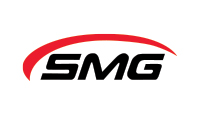January 3, 2014
Carbon Capture and Sequestration (CCS) technologies final rule
POSTED BY
Shital JiwaneTAGGED
SHARE
Carbon dioxide (CO2) capture and sequestration (CCS) ) (also known as Geologic Sequestration (GS) is the process of injecting CO2, captured from stationary sources – like coal-fired power plants and large industrial operations -into deep subsurface rock formations for long-term storage. CCS could play an important role in reducing greenhouse gas emissions, while enabling low-carbon electricity generation from power plants. In the new rule which EPA finalized recently, CO2 streams captured from emission sources, injected underground via UIC Class VI wells approved for the purpose of geologic sequestration under the Safe Drinking Water Act, and meeting certain other conditions (e.g., compliance with applicable transportation regulations), will be excluded from EPA’s hazardous waste regulations.
EPA also regulates Class VI Injection wells under the Safe Drinking Water Act to ensure that the wells are appropriately sited, constructed, tested, monitored, and closed. EPA also has reporting requirements under the Greenhouse Gas Reporting Program for facilities that inject CO2 underground for geologic sequestration and all other facilities that inject CO2 underground.
EPA’s finalized rule can be found at 40 CFR Parts 260 and 261.
For more information on CCS, please see the links below:
Geologic Sequestration – Climate Change
Geologic Sequestration – Water
Carbon Sequestration in Agriculture and Forestry
